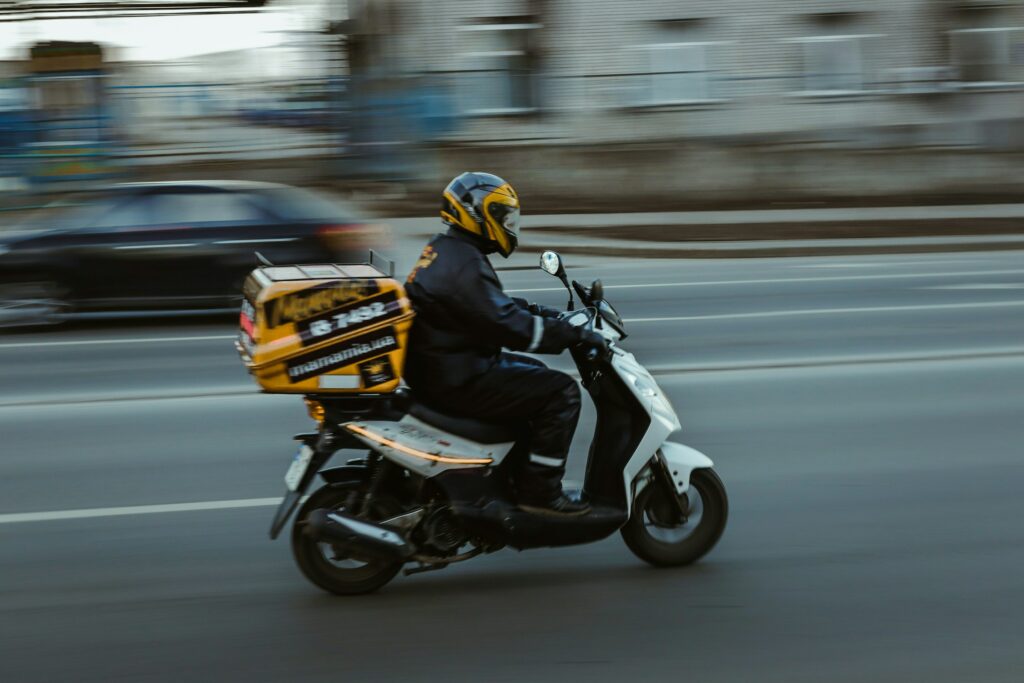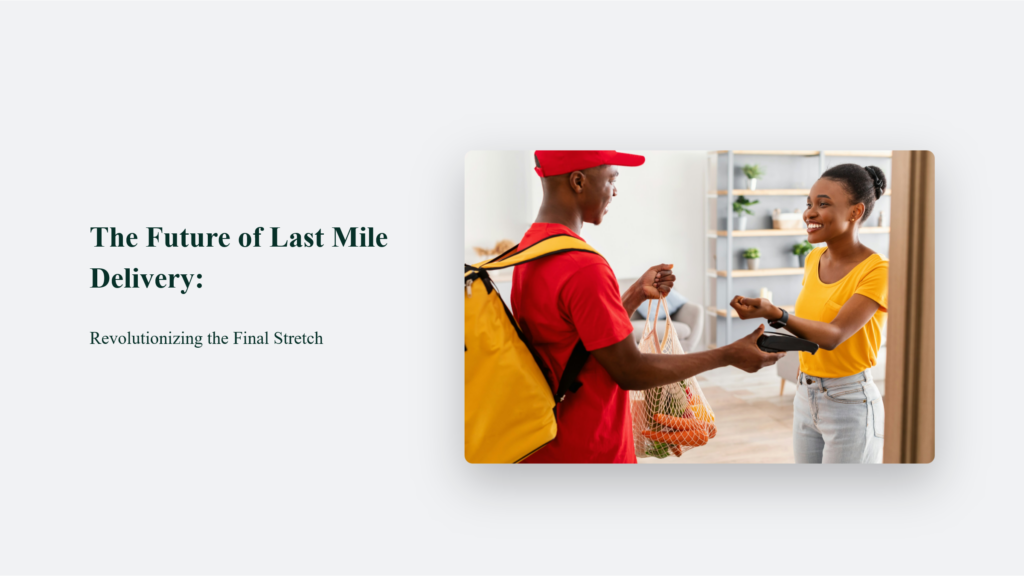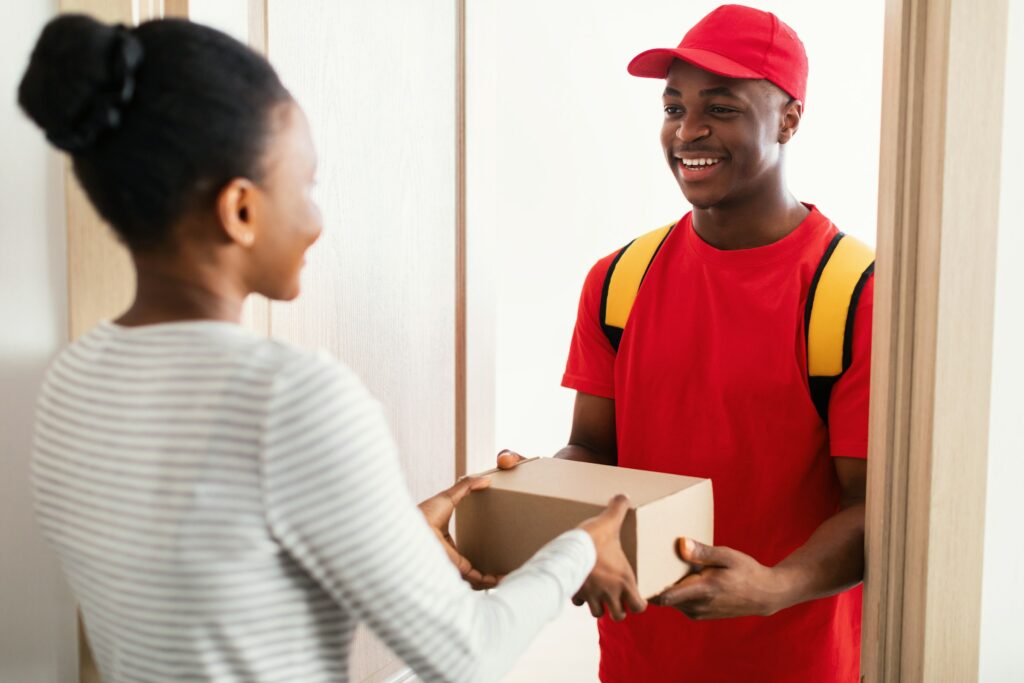

The Future of Last Mile Delivery: Revolutionizing the Final Stretch

As Seen On
In today’s fast-paced world, where convenience reigns supreme, last-mile delivery has become a crucial e-commerce component. As consumers demand faster and more efficient delivery services, businesses are constantly seeking innovative solutions to conquer the final stretch of the supply chain. This article delves into the fascinating world of last-mile delivery, exploring its challenges, emerging trends, and the transformative impact on our daily lives.

Introduction: The Last Mile Delivery Conundrum
The term “last-mile delivery” refers to the final leg of the journey, where a product or service is transported from a transportation hub to its ultimate destination—the customer’s doorstep. While this may seem simple, it is often the supply chain process’s most complex and costly part. Imagine the intricate logistics web required to navigate congested city streets and residential areas and ensure timely and accurate deliveries. It’s a logistical puzzle that has captivated the minds of industry experts and entrepreneurs alike.
The Challenges of Last Mile Delivery
Delivering packages directly to customers’ doorsteps encapsulates the most demanding and intricate phase of the shipping process. As the demand for rapid delivery escalates and e-commerce behemoths set lofty consumer expectations, the challenges within last-mile delivery intensify, evolving into a multifaceted logistical hurdle.
Navigating Urban Complexity
Urban delivery resembles moving through a labyrinth, where each turn presents potential delays. Congested city streets are a notorious barrier, with vehicles inching forward, particularly during peak hours, significantly prolonging delivery times. The complexity is compounded by stringent regulations in urban areas, such as vehicle size restrictions and limited access to certain zones during specific times, which require precise planning and flexibility.
Weathering the Unpredictable
Weather conditions pose a significant and unpredictable challenge. A sudden downpour, a heavy snowfall, or even a heatwave can derail the best-laid plans. Deliveries become slower as drivers navigate hazardous roads, and packages are at risk of damage from exposure to elements, requiring additional protective measures that can increase costs.
The Last Mile Problem
Among the most daunting of these challenges is the “last mile problem.” This issue refers explicitly to the inefficiencies and inflated costs associated with the final leg of delivery—the point at which goods move from a transportation hub to the customer’s doorstep.
Despite covering a relatively short distance, this final leg is disproportionately expensive. According to research by McKinsey & Company, last-mile delivery constitutes about 28% of the total transportation cost. This cost accrues from several factors:
- High Fuel Expenses: Frequent stops and idle times lead to higher fuel consumption.
- Labour Costs: Deliveries require drivers, and as the demand for quicker deliveries increases, so does the need for more skilled personnel.
- Inefficient Route Management: Without advanced route optimization, drivers can take longer routes, thus increasing time and fuel consumption.
Addressing the Rising Demand
The surge in e-commerce popularity pressures businesses to deliver more quickly and reliably, a demand that often leads to logistical strains. Companies manage numerous orders, each with distinct delivery specifications, while maintaining speed and efficiency. This demand tests the capacity and scalability of existing delivery networks and mandates continuous adaptation and investment in technology.
Technology as a Double-Edged Sword
While technology offers solutions, such as route optimization software and real-time tracking, it also raises customer expectations for transparency and speed. The same tools that help streamline operations also empower customers to demand more, establishing a new standard that all businesses must meet to remain competitive.
The Environmental Impact
As last-mile delivery becomes more frequent, its environmental impact becomes increasingly significant. The proliferation of delivery vehicles contributes to urban air pollution and noise. Companies are now tasked with optimizing their logistical operations in environmentally sustainable ways.
7 Trends That Will Continue to Shape (and Change) Last Mile Delivery
The last-mile delivery industry is undergoing a rapid transformation, driven by technological advancements, changing consumer expectations, and the ever-growing demand for faster and more efficient delivery services. Here are seven trends that will continue to shape and change the landscape of last-mile delivery:
Autonomous Delivery Vehicles and Drones
The rise of autonomous delivery vehicles and drones is poised to revolutionize the last-mile delivery process. Companies like Amazon, Nuro, and Starship Technologies are pioneering the development of self-driving robots and drones capable of navigating urban environments and delivering packages directly to customers’ doorsteps. These autonomous solutions promise to reduce delivery times, minimize human error, and improve efficiency.
Integration of Internet of Things (IoT) and Real-Time Tracking
IoT sensors and GPS-enabled devices are becoming increasingly prevalent in last-mile delivery operations, enabling real-time tracking of shipments and providing valuable data on factors like temperature, humidity, and package integrity.
This technology enhances transparency and customer satisfaction, helps optimize delivery routes, and identifies potential issues before they occur.
Adoption of Electric Vehicles (EVs)
As sustainability becomes a top priority, more companies embrace electric vehicles (EVs) for last-mile delivery. EVs offer a greener alternative to traditional delivery methods, reducing carbon emissions and contributing to a more environmentally friendly supply chain. Major players like Amazon, UPS, and FedEx are actively transitioning their fleets to electric vehicles.
Hybrid Fleet Management and Insourcing
To meet fluctuating demand and reduce capital costs, businesses are adopting hybrid fleet management strategies, combining their vehicles with third-party providers and freelance drivers. Additionally, some companies opt for insourcing, managing last-mile delivery internally using their own fleet or a combination of company-owned and contracted vehicles.

Advanced Analytics and Machine Learning
Advanced analytics and machine learning algorithms are being leveraged to gain insights into customer behaviour, demand patterns, and operational inefficiencies. These insights can then be used to optimize delivery routes, predict demand surges, and streamline the entire supply chain process, resulting in significant cost savings and improved customer satisfaction.
Micro-Mobility Solutions
Companies are exploring micro-mobility solutions such as electric bikes and scooters for shorter delivery distances, particularly in densely populated urban areas. These alternatives offer a cost-effective and environmentally friendly last-mile delivery option, reducing traffic congestion and carbon emissions.
Crowdsourced Delivery Models
Crowdsourced delivery models, where individuals use their vehicles to deliver packages, are gaining traction as a flexible, cost-effective solution. Companies like Uber and Postmates have successfully implemented this model, leveraging the gig economy to meet the growing demand for last-mile delivery services.
As the e-commerce industry continues to boom and consumer expectations for faster and more convenient delivery services rise, these trends will play a pivotal role in shaping the future of last-mile delivery. Companies that embrace innovation, sustainability, and customer-centric solutions will be well-positioned to gain a competitive edge in this.
The Environmental Impact of Last Mile Delivery
As the demand for e-commerce continues to soar, the environmental impact of last-mile delivery has become a pressing concern. The proliferation of delivery vehicles on our roads contributes to increased carbon emissions, traffic congestion, and air pollution1. However, innovative solutions are emerging to address these challenges.
One such solution is adopting electric vehicles (EVs) for last-mile delivery. Companies like Amazon, UPS, and FedEx are actively transitioning their fleets to electric vehicles, reducing their carbon footprint and contributing to a more sustainable future. Electric commercial and heavy transport can reduce CO2 emissions by as much as 63% compared to diesel vehicles, and if charged with clean, renewable electricity, emissions can be cut by up to 84%.
The rise of micro-mobility solutions, such as electric bikes and scooters, offers a greener alternative for shorter delivery distances, particularly in densely populated urban areas. These alternatives offer a cost-effective and environmentally friendly option for last-mile delivery, reducing traffic congestion and carbon emissions.
Addressing the Environmental Challenges
A collaborative effort from all stakeholders is crucial to addressing the environmental challenges of last-mile delivery. The World Economic Forum, in collaboration with McKinsey & Company and the World Business Council for Sustainable Development, has developed three transition scenarios based on 24 supply chain and technology interventions. The best-case scenario is the “multiplayer ecosystem approach,” where public and private players work together effectively to develop incentives that encourage consumers to receive deliveries in more sustainable ways.
City and national governments can further incentivize the adoption of green fleets by investing in electric vehicle infrastructure, offering green occupancy vehicle (GOV) driving lanes, express parking, ticketing and toll exemptions, or carbon credits for green vehicles. Consumers can also play a role by choosing retailers that offer more sustainable delivery options, as 43% of consumers are more likely to do so, according to the World Economic Forum study.
The Role of Technology and Innovation
Technology and innovation are key enablers in the pursuit of sustainable last-mile delivery. Advanced analytics and machine learning algorithms can be leveraged to optimize delivery routes, predict demand patterns, and streamline the entire supply chain process, significantly reducing carbon emissions.
Virtual twin technology and simulation capabilities allow companies to test and identify ergonomic, lightweight, and plastic-free packaging materials and designs, optimizing logistics and reducing waste. Additionally, data-driven analytics provide real-time insights into logistics operations, enabling companies to manage carbon emissions and accelerate sustainability efforts.
By embracing these innovative solutions and fostering stakeholder collaboration, businesses can balance meeting customer demands for faster and more convenient delivery services while minimizing their environmental impact.
The Bottom Line:
As the world continues to embrace the convenience of e-commerce, the importance of efficient and innovative last-mile delivery solutions cannot be overstated.
By harnessing the power of cutting-edge technologies, embracing sustainability, and prioritizing customer satisfaction, businesses can navigate the challenges of the final stretch and unlock a future where seamless, lightning-fast, and eco-friendly deliveries are the norm.
The last-mile delivery revolution is well underway, and those who embrace it will be at the forefront of shaping the future of logistics and supply chain management.
Gracie Jones
Up until working with Casey, we had only had poor to mediocre experiences outsourcing work to agencies. Casey & the team at CJ&CO are the exception to the rule.
Communication was beyond great, his understanding of our vision was phenomenal, and instead of needing babysitting like the other agencies we worked with, he was not only completely dependable but also gave us sound suggestions on how to get better results, at the risk of us not needing him for the initial job we requested (absolute gem).
This has truly been the first time we worked with someone outside of our business that quickly grasped our vision, and that I could completely forget about and would still deliver above expectations.
I honestly can’t wait to work in many more projects together!
Disclaimer
*The information this blog provides is for general informational purposes only and is not intended as financial or professional advice. The information may not reflect current developments and may be changed or updated without notice. Any opinions expressed on this blog are the author’s own and do not necessarily reflect the views of the author’s employer or any other organization. You should not act or rely on any information contained in this blog without first seeking the advice of a professional. No representation or warranty, express or implied, is made as to the accuracy or completeness of the information contained in this blog. The author and affiliated parties assume no liability for any errors or omissions.

